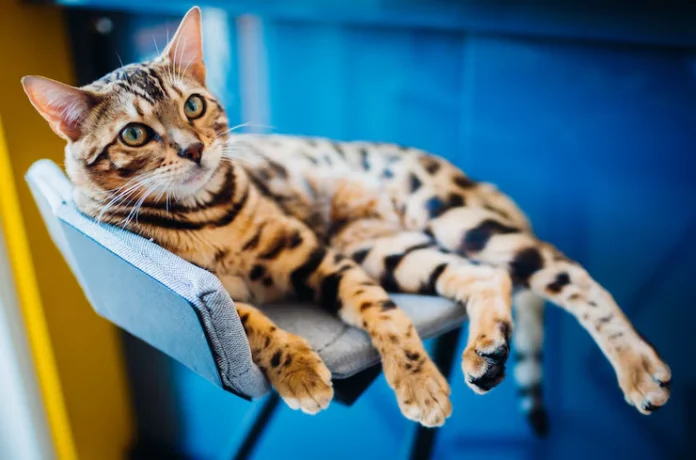Introduction: The Jungle in Your Living Room
Have you ever wished for a pet that brings a splash of the wild into your home but still cuddles like a loyal companion? The Bengal cat might just be the answer. These stunning felines look like miniature leopards yet share the hearts of lap cats. The Bengal stands out among domestic breeds. It has rosetted fur patterns, high energy, and great intelligence.
In this article, we explore the Bengal cat’s journey from wild ancestry to beloved companion. Whether you’re a new cat parent, a seasoned Bengal owner, or just curious, you’ll find all the info you need here.
Table of Contents
Scientific Classification
- Common Name: Bengal Cat
- Scientific Name: Felis catus
- Breed Group: Hybrid / Domestic
- Origin: United States
- Ancestral Lineage: Felis bengalensis (Asian leopard cat) × Felis catus
Breed Origin and History
The Bengal cat is a fascinating breed that traces its roots back to a unique mix of wild and domestic lineage. In the 1960s and ’70s, geneticist Jean Mill embarked on an ambitious project, crossing the small wild Asian leopard cat (Prionailurus bengalensis) with domestic shorthaired cats. Her vision was to create a cat that boasted the striking looks of a leopard while also being the loving companion we cherish in our homes.
By the 1980s, the Bengal cat had officially earned its place as a recognized domestic breed, thanks to meticulous selective breeding and socialization efforts. The International Cat Association (TICA) awarded the Bengal championship status in 1991. Today, Bengals are just four generations removed from their wild ancestors, making them not only legal but also wonderfully tame pets that fit right into our families.

Physical Characteristics
Bengal cats are truly captivating creatures — they have a sleek, athletic build that gives off a hint of their wild ancestry.
Key Traits:
Size: Medium to large (weighing between 8 to 15 pounds)
Body: Long, muscular, and lean
Head: Broad with distinct cheekbones
Eyes: Almond-shaped, in shades of green or gold
Coat: Short, soft, and silky to the touch
Patterns: Spotted or marbled
Colors: Brown, silver, snow, charcoal, and blue
Their coat is perhaps their most striking feature. Some Bengals even seem to sparkle in the light due to a unique trait known as “glitter,” where individual hairs catch the light like tiny flecks of gold.
Bengal Cat Personality and Temperament
One thing’s for sure — Bengals are anything but dull. These cats are lively, clever, and form strong bonds with their human families.
Notable Personality Traits:
Energetic: Always on the move, Bengals are born adventurers.
Vocal: They love to “chat” and express themselves with a range of sounds.
Loyal: They often choose a favorite person and stick close by their side.
Inquisitive: Be prepared for them to explore cabinets, drawers, and high spots.
Affectionate: Despite their wild appearance, they enjoy snuggling, but only when they feel like it.
Their intelligence means they learn quickly—sometimes a bit too quickly! They can easily figure out how to open doors and tackle puzzle toys.
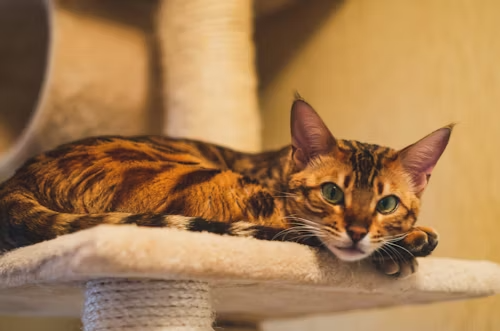
Living Environment: Is Your Home Bengal-Ready?
Bengals thrive in a home that matches their lively spirit. A small, quiet apartment without any fun activities just won’t cut it for this energetic breed.
Ideal Setup:
Vertical Space: Think cat trees, shelves, or even climbing walls
Interactive Toys: Go for puzzles, feather wands, and those fun motorized mice
Outdoor Enclosures: Create a Bengal-safe “catio” for some outdoor fun
Stimulation: Make sure to include daily playtime and plenty of human interaction
If they don’t have enough to keep them busy, Bengals can easily get bored. And boredom can lead to anxiety or even some destructive behavior.
Diet and Nutrition
When it comes to diet and nutrition, Bengals are obligate carnivores, which means they really thrive on a diet that’s high in protein and low in carbohydrates.
Recommended Diet:
– High-Quality Kibble: Look for meat as the first ingredient.
– Wet Food: This not only adds hydration but also boosts protein intake.
– Raw or Homemade: Only if guided by a vet.
– Avoid: Grains, excessive fillers, and artificial additives.
Bengals tend to have fast metabolisms, so it’s crucial to maintain a healthy feeding routine and keep an eye on portion sizes.
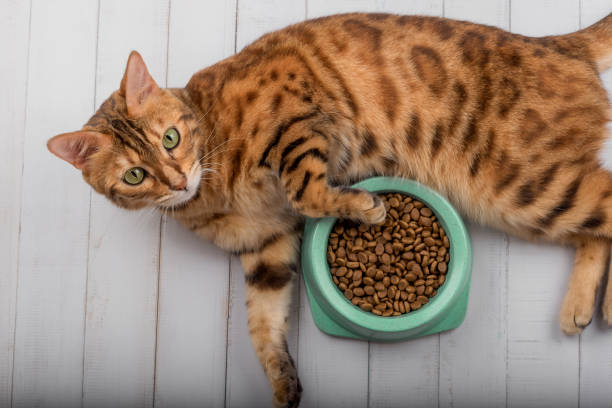
Exercise and Enrichment Needs
If there were an Olympic event for cat agility, Bengals would dominate. These cats demand physical and mental engagement.
Enrichment Ideas:
- Daily Play Sessions: 15–30 minutes twice a day
- Cat Wheels: Great for indoor exercise
- Interactive Feeders: Stimulate natural hunting instincts
- Leash Walking: Possible with proper training
- Training: Clicker training works well with Bengals
They need a lot of stimulation. Some owners even compare them to dogs because they crave play and companionship.
Grooming and Coat Care
You might think Bengals are high-maintenance because of their stunning looks, but the truth is, they’re pretty easy to care for when it comes to grooming.
Grooming Tips:
Brushing: Just once a week to keep loose hair at bay.
Bathing: They rarely need a bath, but most of them don’t mind a splash of water.
Nail Trimming: Aim for every 2–3 weeks.
Ear and Dental Care: Regular cleanings and vet check-ups are a must.
Thanks to their tight, sleek coat, matting isn’t really an issue, which is a huge relief for busy pet owners!
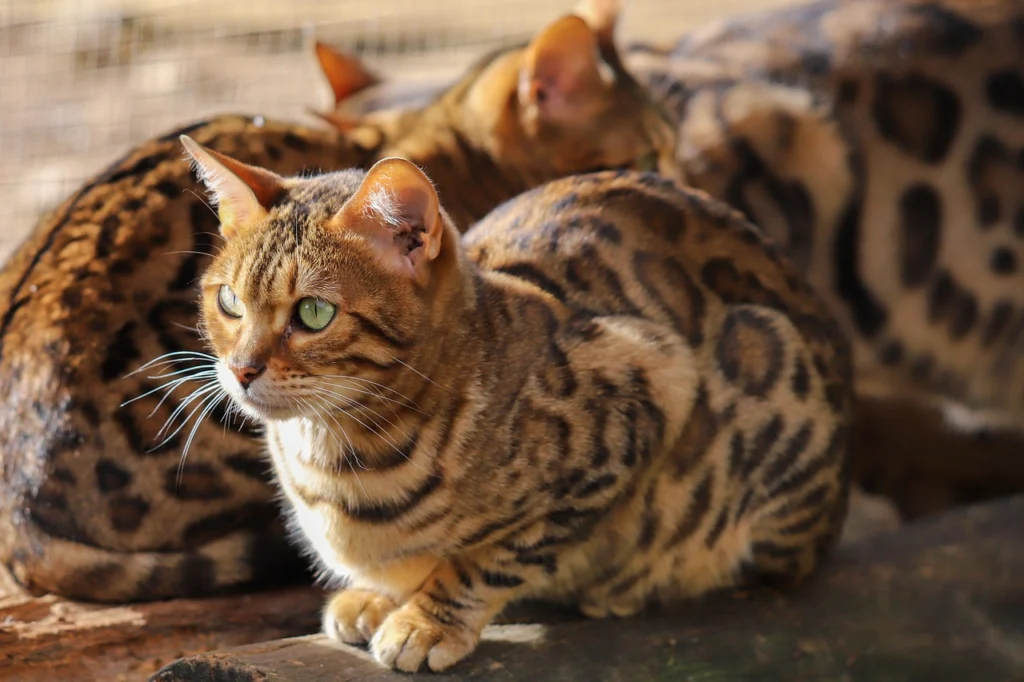
Common Health Issues
When it comes to Bengals, just like any other breed, they can be prone to certain health issues as they age or inherit them.
Here are some common health concerns to keep in mind:
Hypertrophic Cardiomyopathy (HCM): This is a heart condition that can affect their health.
Progressive Retinal Atrophy (PRA): This condition can lead to blindness.
Patellar Luxation: This refers to a dislocated kneecap, which can be quite uncomfortable.
Flat-Chested Kitten Syndrome: A developmental issue that some kittens may face.
PK Deficiency: A genetic disorder that can cause anemia.
If you’re considering getting a Bengal, it’s important to choose reputable breeders who test for these health issues. Always remember to ask about health screenings and request pedigree information when you’re looking to adopt or purchase a cat.
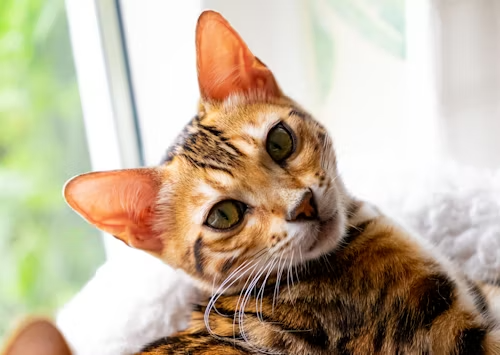
Lifespan and Aging
When it comes to lifespan and aging, Bengals are known for their impressive longevity and can stay lively for many years.
Average Lifespan: 12–16 years
Senior Stage: Typically around 10+ years
Signs of Aging: Decreased activity, dental problems, fluctuations in weight
To ensure your Bengal enjoys a vibrant and fulfilling life, it’s essential to provide a balanced diet, regular exercise, and routine vet check-ups.

Reproduction and Kittens
When it comes to reproduction and kittens, Bengals hit sexual maturity at about 6 to 8 months old.
Here are some key breeding considerations:
**Gestation**: Lasts around 63 to 67 days.
**Litter Size**: Typically ranges from 2 to 5 kittens.
**Weaning**: Usually happens around 8 weeks.
**Socialization**: Kicks off by the time they’re 3 weeks old.
**Spaying/Neutering**: It’s a good idea to do this at 6 months if you’re not planning to breed.
Keep in mind that because of their hybrid background, early generations (F1 to F3) need some experienced handling when it comes to breeding. Most pet Bengals you’ll find are F4 or later.
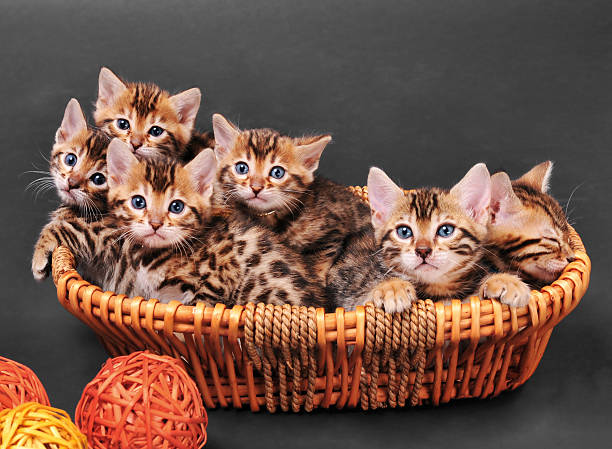
Legal Considerations and Ownership Laws
Some areas restrict or ban owning early-generation Bengals (F1–F3). This is because they are a mix of wild and domestic cats.
Check Local Laws:
- USA: Most states allow F4+ Bengals; restrictions exist in NYC, Hawaii, and Alaska
- Canada: Generally legal F4+
- Australia & Europe: Varies by country and city
Check with local authorities or your breeder/rescue. This helps ensure you follow your region’s pet laws.
Bengals and Other Pets
Can Bengal cats coexist with dogs or other felines? Yes — with the right introductions.
Tips for Multi-Pet Homes:
- Slow Introductions: Use scent swapping and barriers
- Supervised Interaction: Especially at the start
- Dog Compatibility: Best with calm, respectful dogs
- Small Animals: Caution around birds, rodents, or fish
Because Bengals retain strong prey drives, supervision around smaller pets is vital.
Training and Behavior Shaping
Bengals excel in positive-reinforcement training. Their intelligence and food motivation make them ideal students.
Teach Them To:
- Sit, stay, and fetch
- Walk on a harness
- Use the toilet (yes, some do!)
- Stop scratching furniture
- Follow routines
Avoid punishment-based training. Bengals respond better to redirection, praise, and rewards.
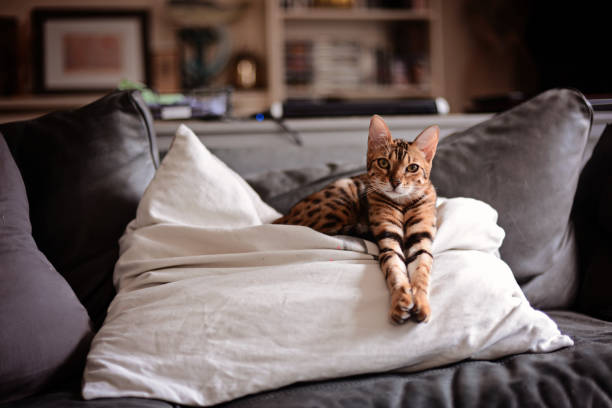
Pros and Cons of Bengal Ownership
Pros:
- Exotic beauty
- Highly intelligent and trainable
- Affectionate and people-oriented
- Low-shedding coat
- Great entertainment
Cons:
- High energy = high maintenance
- Needs lots of stimulation
- Can be vocal and mischievous
- Not ideal for a quiet or low-activity home
- Expensive to buy from breeders
Bengal Cat Facts You Didn’t Know
- Bengals often love water and may even join you in the shower.
- Their rosetted spots mimic leopards, a rare trait in domestic cats.
- Bengals can jump over 3 meters (10 feet) in a single leap.
- Their purring sounds are louder than average cats.
- Many Bengal kittens are born with fuzzy coats, which shed later to reveal their full pattern.
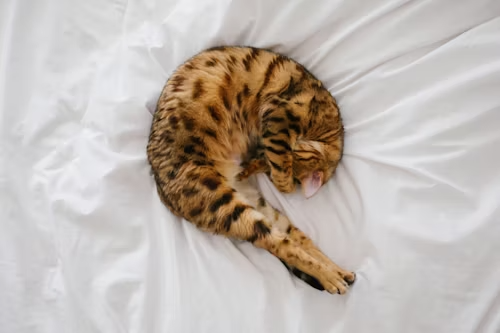
Final Thoughts
The Bengal cat truly stands out from the crowd — it’s a captivating mix of wild spirit and homey charm. With their glossy coats and boundless energy, Bengals bring a vibrant touch to any household. Their playful personalities infuse joy and a sense of luxury into everyday life. However, they’re not for everyone. These cats thrive on mental challenges, companionship, and an environment that sparks their curiosity. Here, curiosity isn’t just accepted; it’s celebrated.
If you’re on the hunt for a cat that’s both unique and brimming with life, the Bengal could be your ideal companion. They offer a delightful blend of affection, joy, and a dash of wildness.

